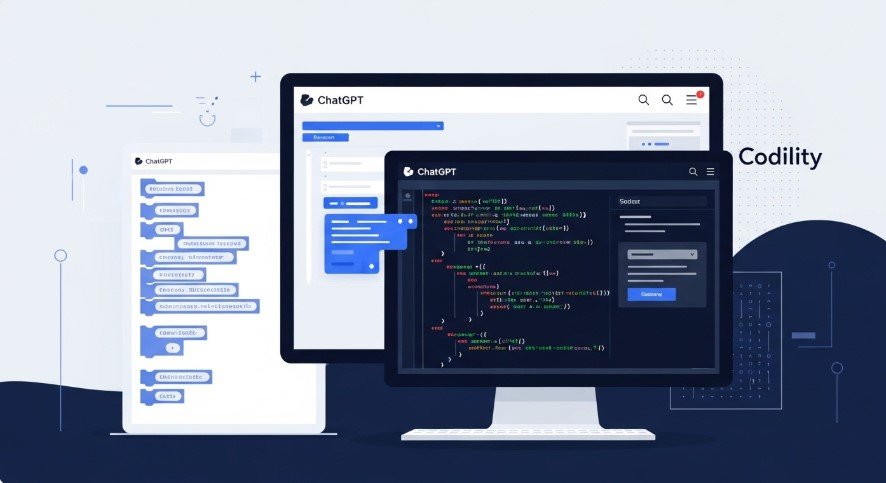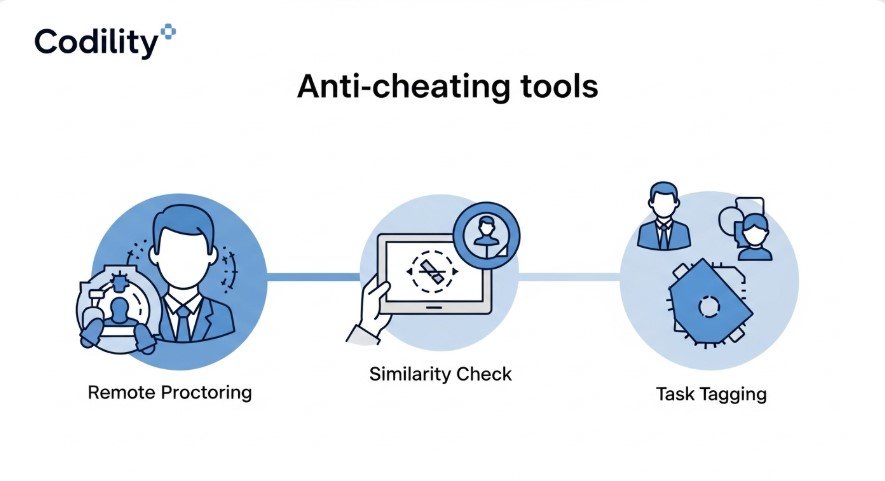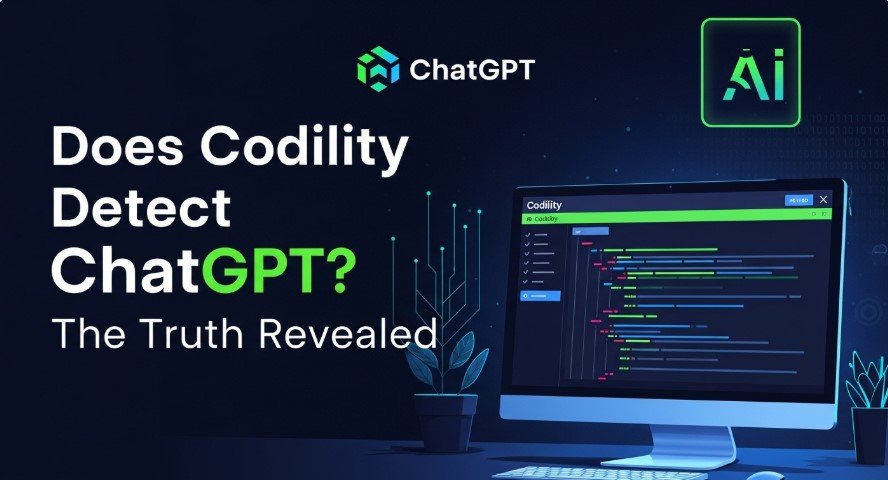In today’s tech hiring world, platforms like Codility are key for testing coding skills. With AI tools like ChatGPT becoming popular, many wonder if Codility can detect their use. This article answers whether Codility spots ChatGPT, how it fights cheating, and what this means for candidates and employers.
Can ChatGPT Solve Codility Problems?
ChatGPT, created by OpenAI, can solve many Codility coding tasks. A 2023 test by Andrew Wegner showed ChatGPT handling sample Codility questions in minutes. However, its solutions may not always be efficient, and complex problems can reveal its limits. Using AI during tests also raises ethical concerns, as it may not reflect a candidate’s true skills.

How Does Codility Detect AI Use?
Codility has strong tools to detect ChatGPT and other AI tools, using a three-pronged approach: prevention, detection, and innovation.
- Prevention: Codility designs tasks that are hard for AI to solve. They also use remote proctoring to discourage cheating.
- Detection: Their Similarity Check compares submitted code to millions of solutions, including AI-generated ones. They also tag tasks by AI solvability, letting employers avoid vulnerable questions.
- Innovation: Codility keeps updating its platform to stay ahead of AI advancements.
As of 2023, Codility was the only major platform offering AI-resistant assessments, according to TestGorilla. Their proctoring also tracks behaviors like copying task descriptions, which could indicate AI use.
| Feature | How It Works | Why It Matters |
|---|---|---|
| Similarity Check | Compares code to a database of solutions | Spots AI-generated or copied code |
| Task Tagging | Marks tasks AI can easily solve | Helps employers choose tougher tasks |
| Remote Proctoring | Monitors behavior like tab switching | Catches suspicious actions |
How Codility Stops Cheating
Codility uses multiple methods to prevent AI-assisted cheating:
- AI-Resistant Tasks: Their task library includes problems designed to challenge AI tools ([source](https://www.prnewswire.com/news-releases/codility-introduces-ai-resistant-skills-assessments-301803 notfound)).
- Proctoring: Webcams and screen monitoring detect actions like copying or switching tabs.
- Photo ID and IP Tracking: Verifies candidate identity and location to prevent sharing tests.
- Similarity Check: Flags code that matches known AI outputs or prior submissions.
These tools make it hard to use ChatGPT without detection. For more on cheating detection, see our post on Can Codesignal Detect ChatGPT?.

What Happens If You Use ChatGPT?
The consequences of using ChatGPT on Codility are not fully detailed in public sources. However, detection could lead to:
- Failing the assessment.
- Disqualification from the hiring process.
- Possible bans from future tests.
Employers value genuine skills, and cheating can harm your reputation. It’s best to prepare and rely on your own abilities. Learn more in our guide on How to Use ChatGPT for Job Applications.
Best Practices for Candidates and Employers
For Candidates:
- Practice coding on platforms like LeetCode or HackerRank to build skills.
- Use ChatGPT for learning, not cheating. Check assessment rules first.
- Be honest to showcase your true abilities.
For Employers:
- Use Codility’s AI-resistant tasks and proctoring for fair evaluations.
- Combine tests with live interviews to verify skills.
- Stay updated on AI detection tools.
For related insights, read Can Blackboard Detect ChatGPT? or Can Canvas Detect ChatGPT?.
Conclusion
Codility can detect ChatGPT use through advanced tools like Similarity Check, AI-resistant tasks, and proctoring. While ChatGPT can solve many coding problems, using it risks detection and disqualification. Candidates should focus on their own skills, and employers can rely on Codility’s features for fair hiring. For the latest details, visit Codility’s official site.
